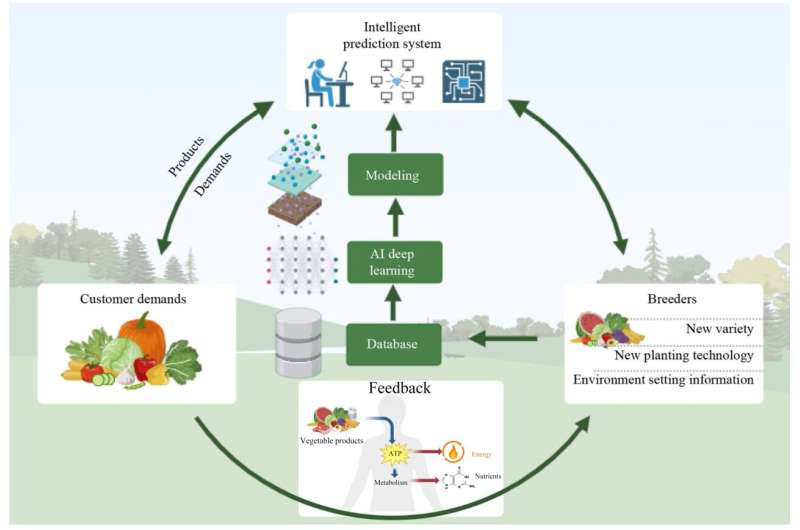This article has been reviewed according to Science X's editorial process and policies. Editors have highlighted the following attributes while ensuring the content's credibility:
fact-checked
trusted source
proofread
New lettuce cultivar 'Zhongsheng No. 1' developed using advanced plant factory technology

A research team has demonstrated that using plant factory technology (PFT) to precisely control environmental factors can significantly enhance vegetable quality. By cultivating a new lettuce cultivar in a PFT system, they achieved higher nutritional content in a shorter period compared to traditional open-field cultivation.
This advancement highlights PFT's potential to revolutionize breeding and cultivation practices and ensure stable vegetable quality among harvests.
Vegetables, rich in essential nutrients and bioactive compounds, are foundational to a healthy diet. The 2022 Chinese Dietary Guidelines recommended intake of more than 300 g of fresh vegetables daily. However, rapid urbanization and lifestyle changes have driven demand for high-quality vegetables, with dynamic qualities influenced by consumer perceptions and environmental factors.
Despite significant advancements in breeding techniques and cultivation practices, achieving a consistently high quality remains a formidable challenge, primarily due to the variable environmental conditions.
A study published in Vegetable Research on 3 June 2024, focuses on optimizing PFT to ensure stable and high-quality vegetable production.
In this study, a PFT-based breeding process was used to develop a new lettuce cultivar, "Zhongsheng No. 1," with high vitamin C content. This cultivar was developed by purifying a natural variant line with high ascorbic acid content through open field selection and speed-breeding chamber cultivation.
The speed-breeding chamber maintained controlled environmental conditions, including LED lighting within the photosynthetically active radiation band (400–700 nm), a 22 h photoperiod at 22°C and 2 h of darkness at 17°C, and specific humidity levels (60%–70%). Over six generations in the span of three years, "Zhongsheng No. 1' exhibited an ascorbic acid content of 24.1 mg/100 g fresh weight, surpassing other lettuce types.
Pre-harvest management and environmental manipulations can improve lettuce quality. For instance, the utilization of a 1:1 red-to-blue-light mixture in combination with nitrogen limitation has been shown to boost anthocyanin accumulation. A predictive model was developed and optimized based on input resources and machine learning, accurately forecasted phenotypic and quality-related data by considering environmental influences.
According to the study's lead researcher, Xiao Yang, "Consequently, PFT shows great potential in facilitating breeding and cultivation practices and achieving stable vegetable quality among harvests."
In summary, this study used PFT to develop "Zhongsheng No. 1," a high-vitamin C lettuce cultivar. By precisely controlling environmental factors in a speed-breeding chamber, researchers reduced breeding time and enhanced vegetable quality. PFT shows promise for producing consistent, high-nutrient vegetables and meeting consumer demand.
Looking ahead, integrating the PFT strategy with advanced breeding techniques could revolutionize vegetable cultivation, addressing global food security and consumer preferences while overcoming economic and technical challenges.
More information: Li Zhang et al, Plant factory technology as a powerful tool for improving vegetable quality: lettuce as an application example, Vegetable Research (2024). DOI: 10.48130/vegres-0024-0015
Provided by Chinese Academy of Sciences





















